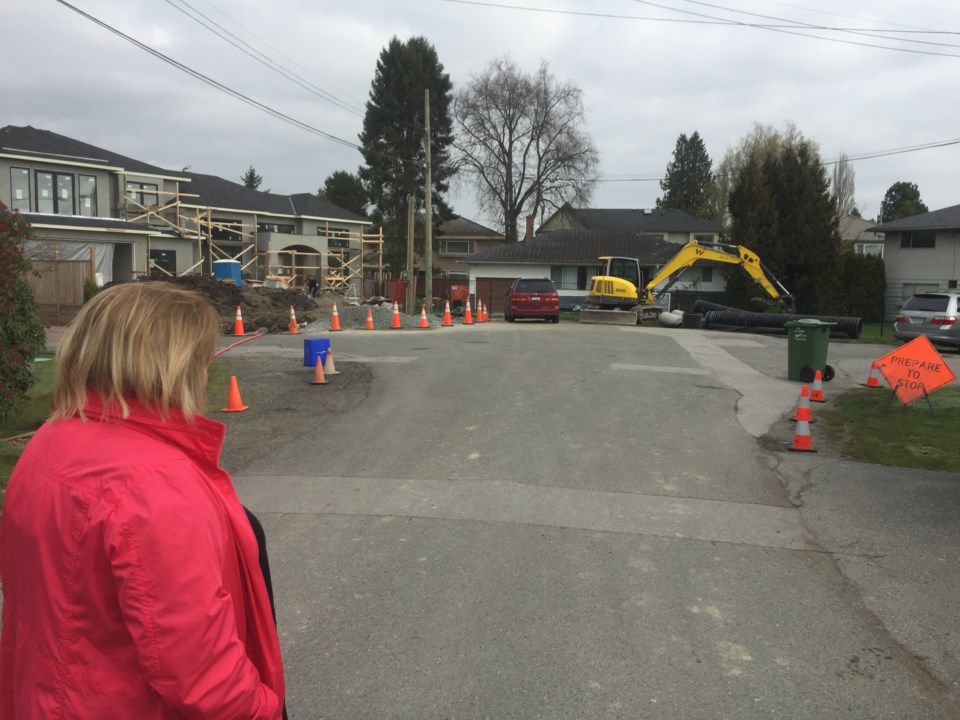Almost the moment we posted our story on housing and changing neighbourhoods it started trending.
That surprised me, not because it isn’t a great story — it is, but because it feels like an old one.
About seven years ago, there was a particularly high wave of anxiety regarding older, modest (in other words affordable) homes getting demolished and replaced with three-story mansions — grain elevators as some called them.
At the time, the city blamed “a loophole” that allowed certain properties to be developed far larger than what municipal bylaws allowed.
That loophole was eventually closed, but the deadline was set for some time in the future, which resulted in a rush of applications. And if the application got in on time, developers still had time before they had to actually start building.
Good homes replaced with grain elevators
I’m not sure if this is why we’re seeing so much activity in the cul de sac behind my place. For some time, we seemed immune to the fate of neighbourhoods like the Monds, but now perfectly serviceable homes are falling like dominos and being replaced with grain elevator-types.
And these homes don’t just go up, they also go out, eating up almost every inch of the lot. So much for lawns to absorb and hold moisture during the wet months to help get us through the dry ones, or trees to capture carbon and provide shade in the case of a heat dome.
I’d like to think these kinds of homes will soon peter out, given the closing of that loophole, I remain concerned.
In other words, it doesn’t matter if it’s an “old story” according to some editor, the fact neighbourhoods continue to go through these kinds of massive transformations and something as basic as housing remains unaffordable for so many people -— of course it’s news.
And it’s not just residents who need homes, so do businesses, health providers and convenience stores.
A staff person at the recently closed 7-eleven on No. 1 Road said a huge rent hike was what shut them down, despite their high traffic.
It’s also why a local doctor said many like her may have to call it quits. (That story we’ll feature next week.)
It’s why some busy restaurants on Alexandra Road are saying that, while they survived COVID-19, they may not weather next month’s rent. (Watch for that one online in the next couple of days.)
More than housing
Point being, this is about more than housing, it’s about building communities.
As I was writing this, a well-timed email landed in my inbox. It was about the Jane’s Walk Festival to be held next week.
I’d never actually heard of the festival, but I’m certainly aware of its namesake.
Jane Jacobs (1916-2006) was an activist and urbanist in New York and Toronto. The walks are based on Jacobs’ idea that “cities have the capability of providing something for everybody, only because, and only when, they are created by everybody,” according to the email.
Jacobs may be best known for helping stop the Lower Manhattan Expressway in the 1960s. Had she not, there probably would be no Soho or Little Italy in Manhattan — just one big expressway.
But Jacobs’ greatest impact was her ability to spark neighbourhood activism, get people out walking their own neighbourhoods, as our reporter did for our front page story. It’s that sidewalk, pedestrian view that shines a light on the vitality of a community.
While our front page story focuses on problems, we also know Richmond has some gems. The upcoming Jane’s Walks Festival features six different walks, most are in Vancouver, but one is in Steveston.
Still, the fact a story headlined “Who are we building these giant homes for?” starts trending the minute it’s posted is telling.

